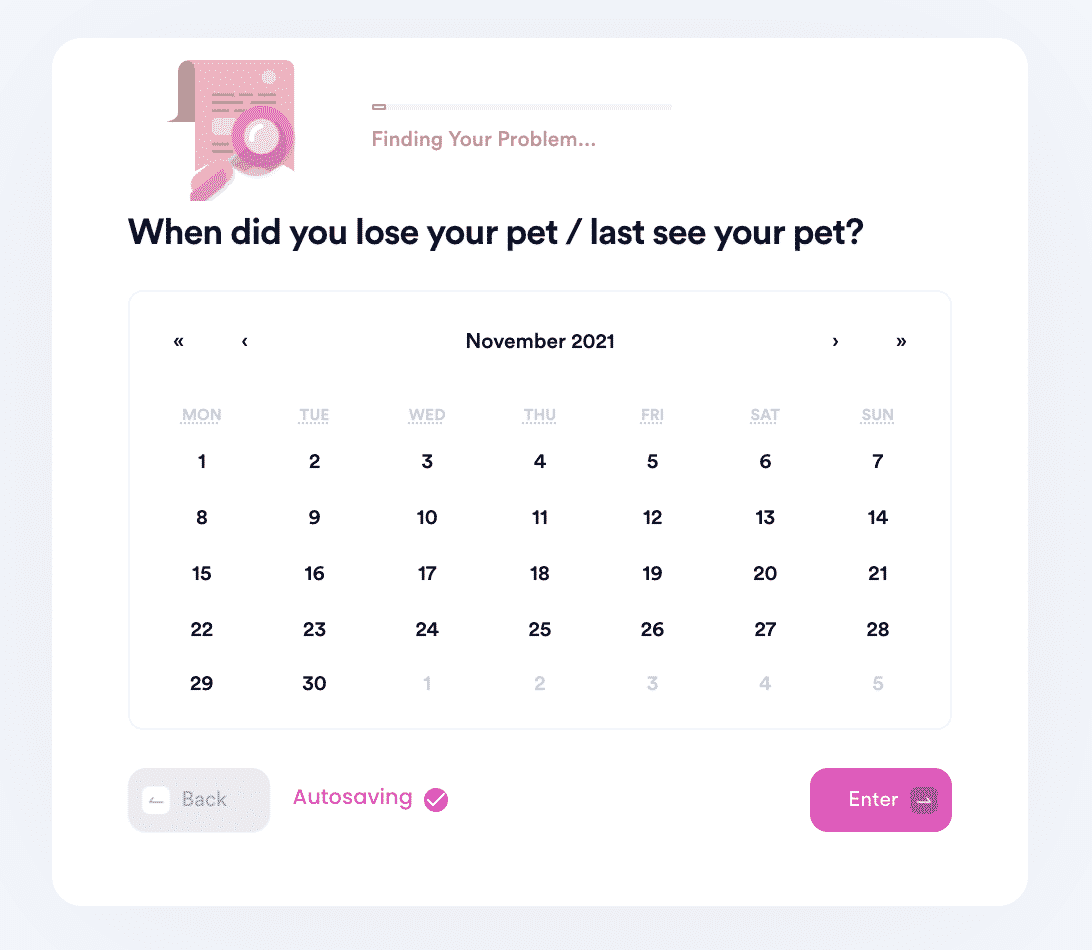How to Search for Your Minnesota Lost Cat
Cats are naturally curious creatures, and frequently venture out to explore their surroundings. If your Minnesota cat is indoor/outdoor, they could get lost even farther away if they come and go unsupervised. It can be particularly troubling when the weather is unkind and ice, snow, or rain prevents an immediate search. In fact, research has found that one-third of lost cats are found within five meters (just over a mile) from their point of escape.
However, this same research indicates your chances of finding your kitty alive and well are increased when a physical search is conducted as soon as possible. If your , there are steps you can take to try to get them back home to safety.
What to Do When You Find Your Cat Is Missing
Since cats are most often lean and agile, they are able to find the strangest hiding places and ways to escape. Your cat might not be missing but, rather, hiding.
Experts say cats hide for many different reasons, including:
- Unfamiliar people
- Unfamiliar environment
- Illness/discomfort
- Injury
If your cat has recently disappeared, take time to search your house and yard. It could simply be they are feeling nervous about something and hiding to observe it or escape it.
Will an Indoor Cat Come Back Home?/Can My Cat Find Its Way Home?
Indoor cats are generally safer from predators and illness. However, if they find themselves outside, they are less likely than an indoor/outdoor cat (or feral cat) to find their way home, if they get too far away. Cats do have a natural homing instinct that scientists still do not fully understand. However, while they bond with humans the same as dogs do, they also form connections to homes/buildings, according to experts.
Report Your Lost Pet to Local Animal Control
Minnesota is home to thousands of housepets and nearly two dozen animal shelters. When your cat goes missing, the first thing to do is notify your local animal control center.
There are other animal control locations in various locales across the state so if yours is not listed here, try Googling animal control Minneapolis, followed by your city. The most important reason to contact your local animal control is to inform them your cat is missing, so they don't inadvertently send your pet to a shelter, and so they can recognize it if found.
Report Your Lost Pet to a Local Animal Shelter
Animal shelters and animal control shelters are different, even if they strive to protect animals at large. Generally speaking, Animal Control Shelters are funded by tax dollars and run by local municipalities. Animal Protection Shelters are operated by individuals or groups and used to prevent the abuse of dogs and cats. These establishments often have "human society" in their names.
According to government officials, "[A]nimal control agencies fulfill a public health and welfare function and were introduced to protect people from animals, while animal protection shelters were created to care for homeless animals."
Make sure you reach out to your local animal shelter to notify them of your lost cat. Information you'll need to provide includes:
- Your cat's name
- Your cat's breed
- Your cat's color
- Any distinguishing markings
- How long your cat has been missing
- Whether your cat has an ID microchip
How to Avoid Losing Your Cat
Losing your cat can be devastating but it's not impossible to prevent it from happening. There are ways to help you avoid losing your cat.
Get Your Cat Microchipped
A microchip is a sure-fire way to identify your cat, should they be turned into animal control or given to an animal shelter. The average cost for microchipping a cat is $45 and only takes one veterinary appointment. A microchip is very small - like a grain of rice - and, when a scanner is held over where the microchip is injected, it reveals the unique ID number for your pet. This number is provided to a pet recovery service and you'll be contacted based on that contact information. Be sure you keep your microchip contact information updated.
Make Home Safe for Your Cat
Indoor cats are just as curious as outdoor ones. Make sure your home is secure and there are no escape routes for them. Check windows and doors, and any access to basements or attics, where cats can get to. Be sure they have food and water, so they don't feel the need to hunt for it.
Keep Good Records
If your cat does go missing, make sure you have all updated information about their health and veterinary care, and a recent photo. It's a good idea to do this for all of your pets, including your dogs.
Get a Pet Tag
If your cat is friendly and wanders around to a neighbor, a pet tag on their collar with your name and contact information would help have your pet returned to you.
Spay/Neuter Your Cat
Cats who are not spayed or neutered, are more likely to roam and have health conditions. Female cats who are spayed, won't go into heat and roam (or attract male cats) and male cats who are neutered are less likely to roam. Experts assert that 90 percent of cats that are spayed have a reduced risk of uterine infections and malignant breast tumors.
How DoNotPay Helps You Find Your Minnesota Cat
DoNotPay can help you report your in three easy steps:
- Search "lost and found pets" on DoNotPay, and select whether you're reporting a lost pet or a pet you've found.

- Enter the date and location you lost or found the pet and tell us more about them, including the breed, gender, whether they are wearing a collar, approximate size, and more.

- Upload evidence a photo of the pet, so they can be identified, and enter your current contact information where you can be reached with updates.

And that's it! DoNotPay will file the report on your behalf, and make sure your lost or found pet gets recorded in the government directory and they know who to contact if they find a match.
Why Use DoNotPay to Help You Find Your Minnesota Cat
The reason why DoNotPay has been successful with its continued service is due to to the fact that its:
- Fast—You don't have to spend hours trying to solve the issue
- Easy—You don't have to struggle to fill out tedious forms or keep track of all the steps involved in solving your problem
- Successful—You can rest assured knowing we'll make the best case for you
What Else Can DoNotPay Do?
DoNotPay does not only cover Lost and Found pets but also covers a wide range of services. Here’s a few of them:
 By
By